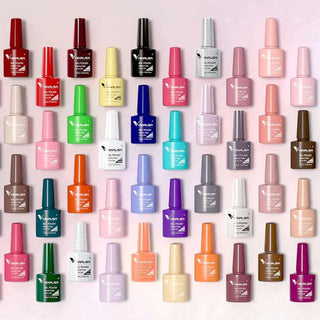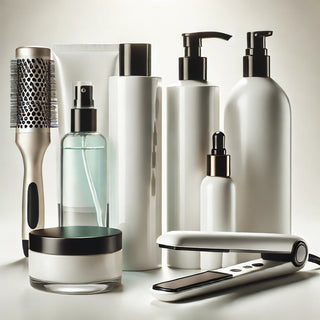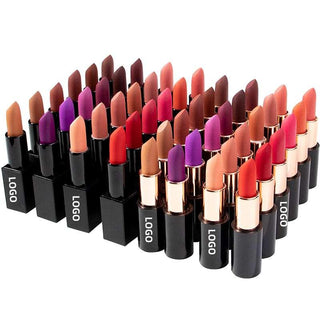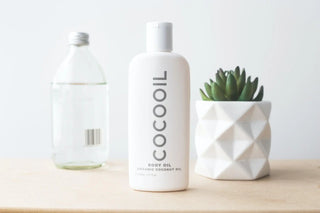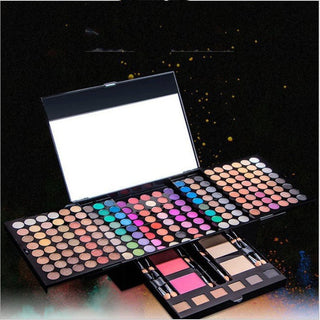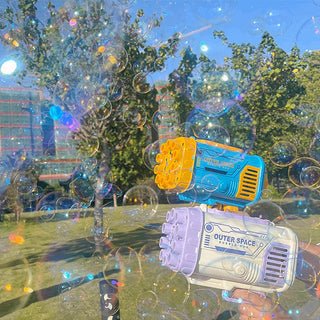Nail polish is more than just a pretty bottle sitting on your vanity. Behind every shade, every glitter and glossy finish, lies a complex combination of chemistry and artistry. As a significant element of modern nail care and nail art accessories, understanding what makes up nail polish can elevate your manicures from simple to stunning, while ensuring you’re choosing the best options for your nails. Whether you’re a professional nail technician or just enjoy experimenting with your nails at home, knowing the science behind nail polish can make a huge difference in how you approach your nail care routine. Let’s dive into the details!
The Composition of Nail Polish
Nail polish comprises several essential components, each playing a unique role in its performance, durability, and appearance. Here’s a breakdown of the primary ingredients found in most nail polishes:
1. Solvents
Solvents are the liquid components that help to dissolve the other ingredients and create a smooth application. The most common solvent used in nail polish is ethyl acetate. It evaporates quickly, allowing the polish to dry fast, but for those who prefer a healthier option, consider looking for polishes that use water-based solvents.
2. Film Formers
This ingredients group is crucial as they create the actual coating on your nails. The most widely used film former is nitrocellulose. It’s responsible for the glossy finish we adore in our nail polishes, while also giving the polish its adhesion properties, making it stick to the nail surface.
3. Plasticizers
To ensure that the nail polish remains flexible and doesn’t chip easily, plasticizers are added. Common examples include dibutyl phthalate and camphor. However, some brands now promote “5-free” or “7-free” formulas, which exclude harmful chemicals, making them safer for long-term use on acrylic nails and other nail extensions.
4. Pigments and Dyes
Coloring agents are responsible for the beautiful shades we see in nail polishes. These pigments can either be inorganic (like metal oxides) or organic. Each has its unique way of interacting with the other ingredients in the polish, affecting the overall hue, opacity, and luster. This is especially significant for nail art accessories, as vibrant colors enhance creativity.
5. Additives
Finally, nail polish may also contain several additives, such as UV filters to protect the polish from sun exposure and thickeners to manage the consistency of the formula. These additives contribute significantly to the polish's longevity and finish, making them a vital inclusion in quality formulations.
Nail Polish Types: What’s Best for You?
With so many varieties available on the market, choosing the right type of nail polish can be overwhelming. Here’s a brief overview of the most popular types of nail polish and their characteristics:
1. Traditional Nail Polish
This is the classic type, known for its quick application and drying time. However, it tends to chip easily, particularly for those who frequently use their hands. For nail technicians, this can be a concern when offering services or nail art. It’s best to use a good base and top coat to prolong wear and enhance shine.
2. Gel Nail Polish
Gel nails have soared in popularity due to their long-lasting shine and durability. They require UV light for curing, which helps them to adhere better to the natural nail and resist chips for weeks at a time. The use of gel polish is particularly appealing for those who love nail art since it holds intricate designs beautifully.
3. Acrylic Nails
Acrylic nails offer an alternative that can be tailored to just about any style or length. Practically anything can be done using acrylics. They provide a sturdy base for nail art accessories, allowing for a plethora of designs and creative expressions. However, the removal process requires care to avoid damage to your natural nails.
4. Breathable Polish
For those concerned about nail health, breathable polishes allow moisture and oxygen to penetrate the nail bed, promoting overall nail care. These formulas are especially beneficial when paired with nail extensions, as they minimize damage while maintaining aesthetic appeal.
The Role of Nail Care in Nail Polish Use
Nail care plays a vital role when it comes to how polishes perform on your nails. Here are some key practices that every nail enthusiast should consider:
1. Prep Your Nails
Before applying any nail polish, it's essential to ensure your nails are clean, dry, and free from oils. A base coat will not only prevent staining but also enhance the adherence of the polish, prolonging its life.
2. Moisturize
Regular moisturizing can prevent your cuticles from becoming dry or cracked, which envelopes the entire nail care process. Keeping your hands and nails well-hydrated creates the perfect canvas for your polish, ensuring longevity and preventing breakage.
3. Regular Breaks
Consider allowing your nails to have a breather in between applications. This helps keep the natural nails healthy and prevents them from becoming weak or prone to breakage, especially when using acrylic nails or gel nails, which can sometimes be harsh on the natural nail bed.
4. Nail Enhancements
If you’re looking to extend the lifespan of your manicure, consider professional nail enhancements. Techniques like nail extensions can help protect your natural nails while giving you a beautiful appearance. Ensuring proper aftercare is essential to maintain nail health.
Choosing Quality Over Quantity
In a saturated market, it’s easy to get drawn to inexpensive options or trendy bottles. However, choosing higher-quality nail polishes can have immense benefits. Here are a few reasons quality matters:
- Durability: High-quality brands tend to last longer without chipping.
- Healthier Ingredients: Opting for polishes that are free from harmful chemicals protects both your nails and health.
- Better Application: Premium nail polish often provides smoother application and better color payoff.
- Variety: Many reputable brands offer extensive color ranges and innovative finishes for those passionate about nail art accessories.
Understanding Trends: What’s Hot in Nail Polish Today?
Keeping up with the latest trends can enhance your nail game. In 2023, several styles and finishes are dominating the scene:
1. Earthy Tones
With sustainability becoming a critical movement in fashion, earthy, muted tones have taken center stage in the nail polish world. Colors such as olive green, terracotta, and sand are all prevalent, forming an elegant and understated look.
2. Metallic Finishes
Shimmer and shine reign supreme! Metallic polishes create a unique, eye-catching effect, making them perfect for special occasions or even everyday glam.
3. Minimalistic Nail Art
While flamboyant designs have been popular for years, minimalism is making a significant comeback. Simple lines, dots, and negative space art have become the go-to for nail art without overwhelming the eyes.
4. Nail Stickers and Decals
In the nail art community, accessories like stickers and decals are merging with polish for an easy and creative application. This trend is especially popular for customizable looks that anyone can aspire to achieve.
Your Nail Polish Journey Starts Here
By now, you should have a better understanding of what goes into your nail polish and how to choose wisely while caring for your nails. Whether you’re a nail technician building your professional repertoire or someone who simply enjoys dabbling in nail art accessories at home, remember that the quality of your polish and your nail care routine plays a significant role in achieving beautiful, healthy nails. Trust yourself to explore colors, finishes, and techniques that resonate with your style, all while placing importance on the science behind the polish!


